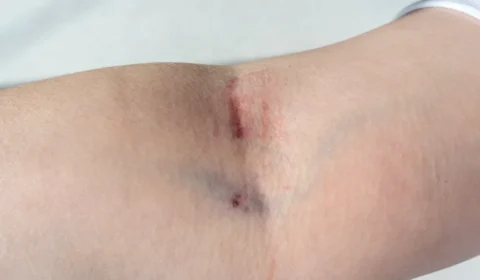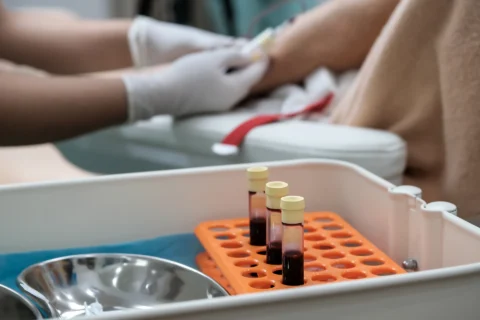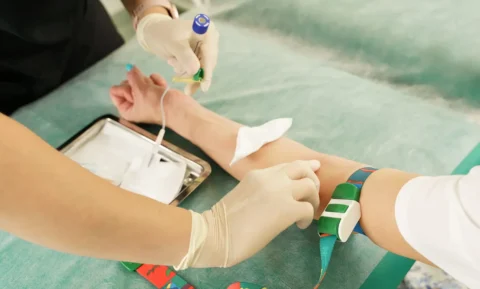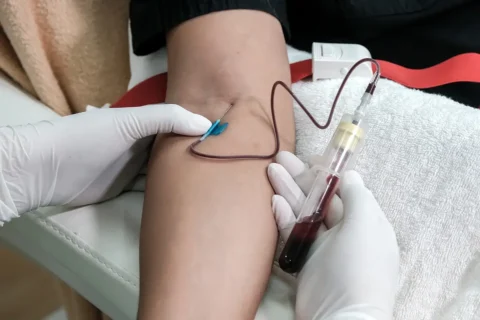Unlock the secret to semaglutide weight loss dosages with our comprehensive chart guide specifically designed for nurses – get results, safely!
As a nurse, you’re always looking for ways to improve the health and well-being of your patients. One area where many struggle is weight loss, which can be challenging to address effectively with diet and exercise alone.
Fortunately, new medications like semaglutide have emerged as promising tools in the battle against obesity.
In this article, we’ll provide you with an evidence-based dosage chart guide for semaglutide to help you empower your patients in their weight loss journey.
By understanding how semaglutide works and implementing a clear dosage plan, you can support your patients in achieving their weight loss goals while minimizing potential side effects. This not only benefits their physical health but also contributes significantly to their emotional well-being by helping them feel more confident and capable of maintaining a healthy lifestyle.
Importance of Proper Semaglutide Dosing
You know, understanding the right semaglutide weight loss dosage for your patients is crucial for achieving those desired results and maintaining their safety. As a medical practitioner, you play a vital role in administering this treatment and ensuring its efficacy while minimizing potential risks.
Semaglutide, an injectable medication primarily used to manage type 2 diabetes, has shown promising results in aiding weight loss by suppressing appetite and regulating blood sugar levels. With the growing interest in using semaglutide for weight loss, it’s essential to have a comprehensive knowledge of its dosage chart and proper administration techniques.
So if you’re eager to expand your expertise in this emerging field of weight management and enhance your ability to serve others, stay tuned as we delve deeper into the specifics of semaglutide weight loss dosage charts designed specifically with nurses in mind.
What is semaglutide and how does it work on weight loss?
So, how does this medication help shed those extra pounds and what’s the science behind it?
Semaglutide is a glucagon-like peptide-1 (GLP-1) receptor agonist that works to regulate blood sugar levels and promote weight loss. It does this by mimicking the action of GLP-1, a hormone released in response to food intake that helps lower blood sugar levels by stimulating insulin secretion and suppressing glucagon release.
Semaglutide slows gastric emptying, which in turn reduces appetite and leads to a decreased food intake. As nurses, understanding how semaglutide works is crucial when managing patients who are prescribed this medication for weight loss.
The dosage chart for semaglutide is essential in ensuring proper dosing and administration to maximize its benefits while minimizing potential side effects.
The FDA has approved semaglutide for use as an adjunct treatment for adults with type 2 diabetes mellitus and also as a chronic weight management treatment for adults with obesity or overweight with at least one weight-related comorbid condition.
By familiarizing yourself with the intricacies of this medication, you’ll be better equipped to provide optimal care for your patients on their journey towards improved health outcomes.
Semaglutide Weight Loss Dosage Chart
It’s also essential to familiarize yourself with the recommended starting dosage, titration schedule, maintenance dosages, and factors that may affect the dosage such as age, weight, and renal function.
Being well-versed in dose adjustments for concomitant medications will help you ensure successful treatment initiation and ongoing management.
A comprehensive semaglutide weight loss dosage chart can serve as an invaluable tool for nurses navigating this terrain.
Typically, treatment begins with a low dose of 0.25 mg per week for four weeks to minimize gastrointestinal side effects. After this initial period, the dose is increased incrementally every four weeks until reaching the target maintenance dose of 2.4 mg per week as tolerated by the patient.
Keep in mind that individual factors like age or renal function may necessitate adjustments to this standard titration schedule—so always consult your patient’s specific needs when determining appropriate dosing strategies.
When assisting patients who are taking other medications concurrently with semaglutide therapy, make sure to follow guidelines regarding potential interactions and necessary dose adjustments to optimize safety and efficacy throughout their weight loss journey.
Administering Semaglutide
Start with an initial dose of 0.25 mg per week for four weeks, followed by gradual dose increases according to the prescribed schedule. When administering semaglutide, educate your patients on proper subcutaneous injection techniques, such as injecting into the abdomen or thigh at a 45-90 degree angle, rotating injection sites, and avoiding areas with scars or tattoos.
Encouraging patient adherence is vital for successful weight loss outcomes using semaglutide. Provide clear instructions on storage and handling considerations, such as refrigerating unopened pens between 2-8°C (36-46°F) and storing opened pens at room temperature for up to 56 days. Offer practical tips for incorporating injections into their daily routine and emphasize the importance of following the dose escalation schedule to minimize gastrointestinal side effects.
By providing thorough education and support throughout their treatment process, you can empower your patients to take control of their health and achieve lasting weight loss success with semaglutide therapy.
Monitoring and Assessing Treatment Outcomes

Effectively monitoring and assessing treatment outcomes is a critical aspect of managing patients on semaglutide therapy, as it allows for timely adjustments to their treatment plan and ensures optimal weight loss results.
By keeping an eye on key clinical parameters and regularly evaluating the patient’s response to the medication, you can make informed decisions about dosage adjustments or other interventions that may be necessary for achieving the best possible outcome.
When monitoring and assessing treatment outcomes in patients using semaglutide for weight loss, consider focusing on the following:
- Weight and BMI: Regularly track changes in the patient’s weight and calculate their BMI to determine if they are making progress toward a healthier body weight.
- Blood pressure: Keep an eye on blood pressure levels, as significant reductions in body weight can lead to improvements in cardiovascular health.
- HbA1c: For patients with type 2 diabetes, monitor HbA1c levels closely to ensure that any improvements in glycemic control are being maintained over time.
- Side effects and adverse events: Be vigilant for potential side effects or adverse events associated with semaglutide use, such as gastrointestinal symptoms or injection site reactions.
Using a dosage chart designed specifically for semaglutide weight loss therapy can help guide your decision-making process when monitoring and assessing these critical treatment outcomes. Collaborating with other healthcare providers involved in your patient’s care will also contribute to more comprehensive evaluations of their progress.
Remember that understanding each individual’s unique circumstances – including their medical history, lifestyle factors, and personal goals – is essential when working together towards better health outcomes.
Comparing Semaglutide with Tirzepatide
In the previous section, we discussed the importance of monitoring and assessing treatment outcomes for patients on semaglutide weight loss therapy. Now, let’s explore another emerging option in the world of weight management medications – tirzepatide.
As nurses, it’s crucial to stay updated with new developments and be able to compare different treatments to help guide your patients towards the most suitable choice for their needs.
Both are injectable glucagon-like peptide-1 (GLP-1) receptor agonists that have shown promising results in achieving significant weight loss in clinical trials. Semaglutide has already been approved for use in obesity management, while tirzepatide is still under investigation.
Recent studies suggest that tirzepatide might lead to greater weight loss compared to semaglutide; however, more research is needed before definitive conclusions can be drawn.
On the safety front, both medications share similar side effects such as gastrointestinal symptoms like nausea and vomiting. However, individual patient factors should always be considered when choosing between these two options.
Implementing Semaglutide and Tirzepatide into your Aesthetic Practice
Struggling to Expand Your Aesthetic Practice? Discover a Proven Solution!
Your patients are looking for comprehensive solutions. If your practice cannot offer a sound weight management service, you may lose out on potential business.
Plus, incorrect administration or insufficient knowledge of weight management medications like Semaglutide and Tirzepatide can pose a risk to patient safety and your reputation.
Meet the Implementing Semaglutide and Tirzepatide into your Aesthetic Practice course, your golden ticket to unlocking the full potential of your practice!
Led by Nurse Practitioner Nikki Plourde, a seasoned expert with a decade of experience in Family Medicine and successful application of weight management medications, this course will guide you through each stage of implementing a successful weight management program.
Enrolling in this course gives you:
- Comprehensive understanding of Semaglutide and Tirzepatide, their contraindications, mechanisms, side effects, dosing, and monitoring.
- Complete online lesson plan with a recorded PowerPoint presentation packed with all the critical knowledge you need.
- Dosing conversion instructions between Semaglutide and Tirzepatide.
- A tutorial on ordering medications, complete with a real-world online example.
- Innovative business and marketing ideas along with a cost breakdown and ROI evaluation.
- Guidelines for patient appointments and follow-ups, including pre-appointment questionnaires.
- Sample protocols, consent forms, SOAP notes, patient questionnaires/handouts, and medication safety sheets.
- In addition, your course purchase entitles you to group rate pricing for Semaglutide!
Don’t let your practice be left behind. Equip yourself with the knowledge and tools needed to offer a robust weight management solution and watch your practice grow. With Nikki Plourde’s ongoing one-on-one support, your success is just around the corner.
Click Here and Seize this opportunity and transform your aesthetic practice today!






